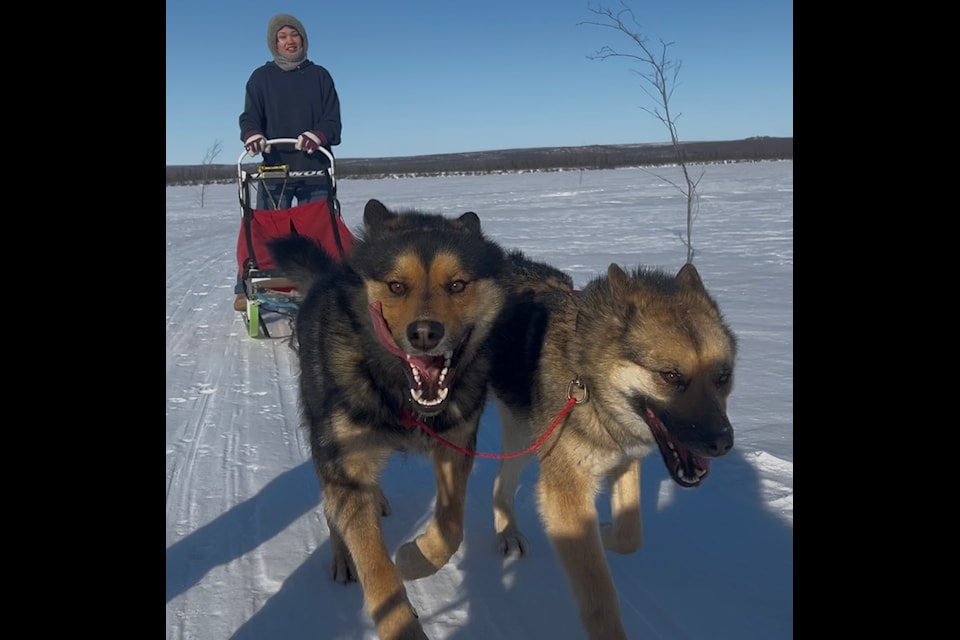For Brooke-Lyn Bodnar, there's nothing that compares to flying across the tundra on a dog sled.
Snowmobiles may go faster, but she says you can't beat the silence of the winter.
"I like how quiet it is," said the Inuvik resident. "When you're driving a Ski-Doo, you have to yell at the other person just so they can hear you. But with this, there's no noise pollution. It's just you and your dogs.
"Once the snow sticks to the ground, we're going to hit the ground running and get the dog sledding club back up. We'll be using the dog teams to go hunting and trapping."
Operating just outside of Inuvik, Uniaraqtuq Dog Sledding club was awarded $100,000 during the Arctic Inspiration Prize ceremony in Ottawa on May 13. The funding will be used to build a cabin and establish a youth camp near Little Muskrat Pond, with a goal of offering year-round programming.
Kaglik added that the plan is to work with East Three School to bring students out for dog sledding and traditional lessons over the academic year. She said the bonding experience between kids and dogs is unlike anything else she's encountered and it teaches good leadership skills.
Co-founded by Bodnar alongside Indigo Taylor and Tamara Kaglik, the project represents more than recreational dog sledding.
"We can canoe from the highway to the camp this spring to get kids out," said Bodnar, who added that she wants to use the camp for Northern games practices during the summer. "I work with Inuvik Community Corporation. Twice a week we held Arctic sports practice with elementary school students. So we're really hoping to get them out to Open Arctic Village to practice.
"It's going to be a long-term project for a few years for us, until we can get new leaders trained. Then we can go to university."
Bodnar said the team's vision is to have a full-on youth cultural camp, with Elders routinely stopping by to teach traditional skills ranging from making clothes to running traplines.
She said it is imperative to provide activities for youth in the area.
"I see a lot of youth getting really bored in town," she said. "There's nothing to do and no work. So I want to bring them out there and show them leadership skills and help them become better."
Ultimately, the goal is to bring youth to the level where they can lead projects on their own.
Kaglik said being on the land had such a positive effect on her that she wanted to share the experience with her peers.
"I was raised out in the bush," she said. "My father taught me the most important thing to pass down is your... knowledge SA����Ӱ�Ӵ�ý� to teach youth our people's traditions. I need to keep that alive.
"Personally, I really found a love with the land. I go away from drugs and alcohol SA����Ӱ�Ӵ�ý� I never, ever do [those things] when I'm out on the land. So I feel like a lot of kids with less opportunities in Inuvik, they'll absolutely fall in love with that."
But healing is only part of the experience, she noted. The abundance of nature offers all sorts of economic and employment opportunities as well, according to Kaglik.
She said she envisions educating youth to hunt and trap for themselves, providing young people with a way to be self-sufficient but also a means of making money at the same time.
"I can teach them fish nets, skinning, stretching and whatnot," she said. "A lot of these children do not know that you can sustain your entire future out on the land, just from hunting and trapping. I want to show how much money you can make on the land."



